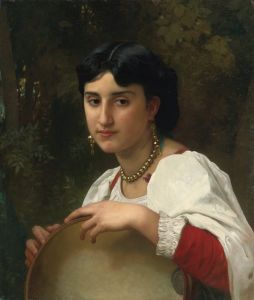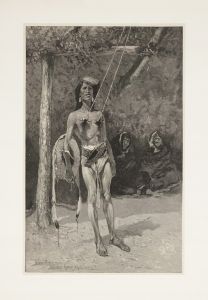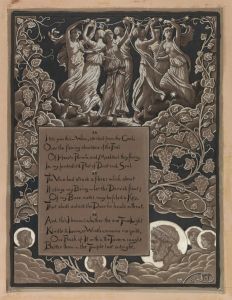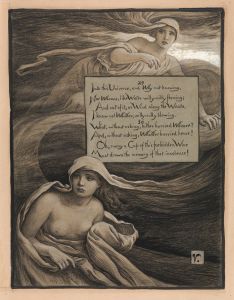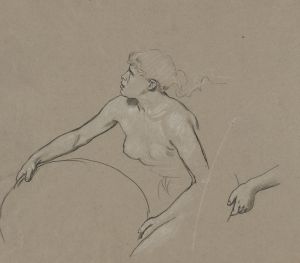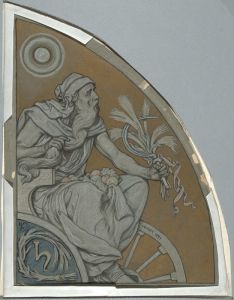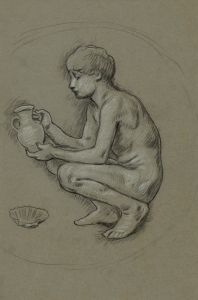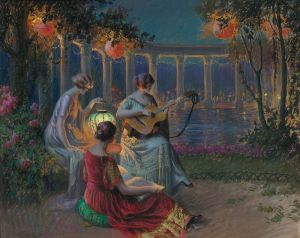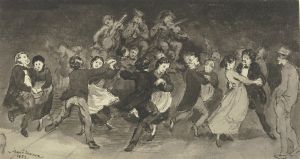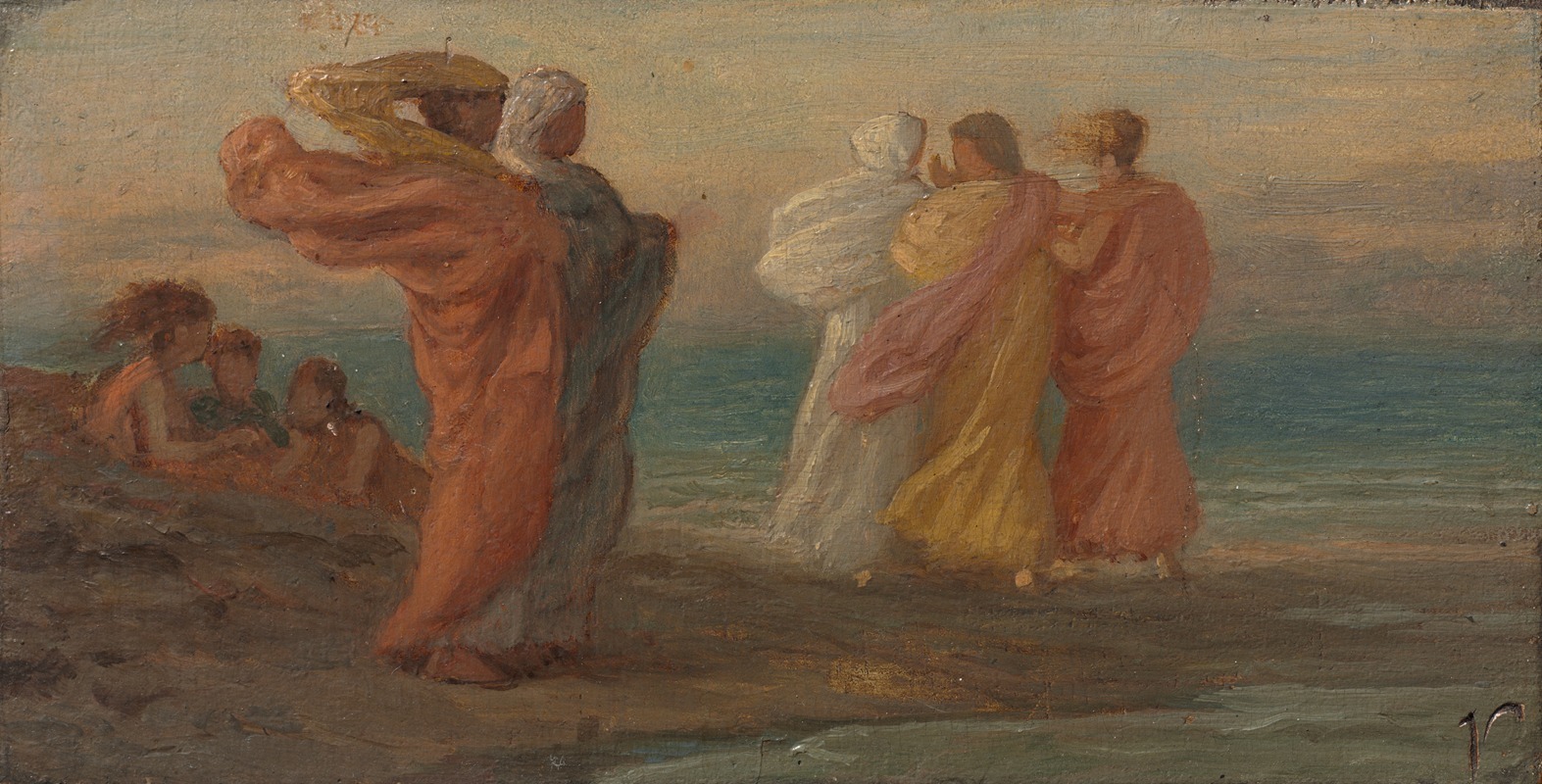
The Music Party
A hand-painted replica of Elihu Vedder’s masterpiece The Music Party, meticulously crafted by professional artists to capture the true essence of the original. Each piece is created with museum-quality canvas and rare mineral pigments, carefully painted by experienced artists with delicate brushstrokes and rich, layered colors to perfectly recreate the texture of the original artwork. Unlike machine-printed reproductions, this hand-painted version brings the painting to life, infused with the artist’s emotions and skill in every stroke. Whether for personal collection or home decoration, it instantly elevates the artistic atmosphere of any space.
Elihu Vedder, an American symbolist painter, created "The Music Party" in the late 19th century. Vedder, born in 1836 and passing in 1923, was known for his mystical and allegorical works, often drawing inspiration from literature, mythology, and his own imagination. His style was heavily influenced by the Pre-Raphaelite Brotherhood and the Symbolist movement, which sought to express ideas and emotions through symbolic imagery.
"The Music Party" is a testament to Vedder's unique artistic vision, combining elements of fantasy with a keen attention to detail. The painting depicts a group of figures engaged in a musical gathering, a common theme in Vedder's work that reflects his interest in the arts as a means of transcending the mundane. The composition is characterized by its dreamlike quality, with figures that appear both ethereal and grounded in reality.
Vedder's use of color and light in "The Music Party" is particularly noteworthy. He employs a palette that is both rich and subdued, creating a harmonious balance that enhances the painting's otherworldly atmosphere. The figures are rendered with a delicate touch, their expressions and postures conveying a sense of introspection and unity with the music they are creating or experiencing.
The setting of the painting, while not explicitly defined, suggests an intimate and timeless space, perhaps a reflection of Vedder's own experiences in the artistic circles of his time. Vedder spent a significant portion of his life in Italy, and his exposure to the classical art and architecture of the region is evident in the classical elements present in the painting. This influence is seen in the drapery of the figures' clothing and the architectural details that frame the scene.
"The Music Party" exemplifies Vedder's ability to blend realism with fantasy, creating a narrative that invites viewers to explore the deeper meanings behind the imagery. The painting does not merely depict a musical gathering; it evokes a sense of mystery and contemplation, encouraging viewers to ponder the relationship between art, music, and the human experience.
While specific details about the provenance and exhibition history of "The Music Party" are limited, Vedder's work as a whole has been celebrated for its contribution to American art and its exploration of symbolic themes. His paintings, including "The Music Party," continue to be studied and appreciated for their artistic merit and their ability to convey complex ideas through visual form.
Elihu Vedder's legacy as a symbolist painter is firmly established, with "The Music Party" serving as a prime example of his skill in merging the real with the imagined. The painting remains a significant piece within Vedder's oeuvre, reflecting his lifelong dedication to exploring the intersections of art, music, and the human psyche.





